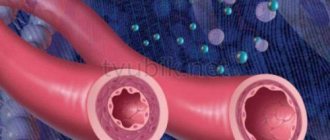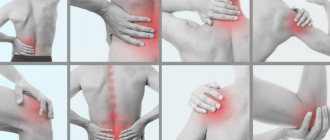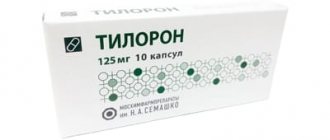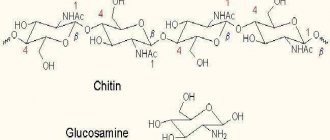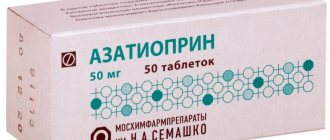Digitoxin, instructions for use of which will be described in the following text, is a natural cardiac glycoside used to treat cardiac diseases. The drug is obtained from several types of foxglove.
Digitoxin – natural cardiac glycoside, extract from digitalis
Outwardly, it looks like a white powder that has a crystalline structure and is poorly soluble in alcohols and water. Digitoxin was discovered back in 1775, although it began to be used in medicine in 1875. Before this, foxglove was used as a poison.
Cardiac glycosides, including digitoxin, are toxic substances that can accumulate in the body. Violation of the rules for taking them leads to an overdose associated with significant disturbances in cardiac activity. Therefore, a doctor must prescribe the drug and establish a regimen for taking it.
Indications for use of Digitoxin
Digitoxin tablets are prescribed according to the instructions for:
- severe and moderate forms of heart failure, in particular, with low cardiac output with normal sinus rhythm and the presence of a gallop rhythm, with ventricular dilatation;
- chronic heart failure with tachysystolic form of atrial fibrillation;
- to reduce heart rate during sinus tachycardia due to acute heart failure, paroxysm;
- paroxysmal supraventricular arrhythmia (atrial flutter, atrial fibrillation, supraventricular tachycardia).
Prescription Digitoxin suppositories are used in ophthalmology for:
- asthenopia (the possibility of incorrect selection of glasses and organic eye damage should be excluded);
- eye fatigue due to poor circulation, increased visual stress, pain in the eyes, the occurrence of migraine attacks, and incipient presbyopia.
Instructions for use of Digoxin in ampoules
Before starting use, you must carefully study the instructions supplied with Digoxin.
Directions for use and doses
The method of administration, as well as the optimal dosage regimen, are determined exclusively by the attending physician on an individual basis.
Digoxin must be injected intravenously (both infusion and drip placement are possible). The entire treatment process includes two periods - initial digitalization (saturation) and subsequent support of the effect.
By receiving cardiac glycoside, the body will gradually become saturated with it until the optimal therapeutic result appears. Each patient has an individual saturating dose, which is the total dose of the drug that ensures adequate digitalization. Clinical signs of glycoside saturation indicate that the patient has received the amount of the substance he needs.
The effect of therapy will persist as long as at least 80 percent of the individual saturation dose is present in the body. Exceeding the individual dose provokes intoxication. Therefore, the average dose was determined, which does not cause complications.
The maximum drug tolerated by the patient without problems may be higher than the average dose, the same as it, or less. A noticeable decrease in the saturating dose is a common occurrence in patients suffering from severe myocardial damage. They first experience intoxication symptoms, and then the effect manifests itself.
0.75 mg of digoxin is the amount of substance for patients with moderately rapid digitalization, which occurs after two or three days, the dose is divided into three injections.
0.25-0.5 mg daily is a suitable dose for patients with slow digitalization. The procedure begins with preparing a solution - Digoxin is diluted with 10 ml of glucose or sodium chloride. At the beginning of treatment, two injections are given per day, then only one. In most cases, digitalization should not be expected earlier than a week later. After achieving this, switch to a dose to maintain the result - 0.125-0.25 mg.
If during treatment the patient exhibits high sensitivity to the glycoside, the dose should be reduced and support should be slowed down.
The dosage regimen must be adjusted when switching from one form of medication to another.
For jet administration, 1-4 ml of medication must be diluted in 10-20 ml of glucose; for drip administration, the specified amount is diluted in 100-200 ml of glucose or saline. This dosage is relevant for patients suffering from paroxysmal supraventricular arrhythmias. Injection rate is 20-40 drops per minute.
Premature newborns are administered 0.02-0.03 mg per kilogram of body weight, full-term - 0.03-0.04 mg per kilogram. In older children, the dose of saturation depends on weight and is calculated as follows: for children aged from 1 month to 2 years - 0.04-0.06 mg per kilogram, from 2 to 10 years - 0.03-0.04 mg, from 10 years – 0.03 mg. The resulting amount of the drug is administered over seven days (slow digitalization) or three to five (moderate). The dose to maintain the effect in small patients is 0.01-0.025 mg per kilogram of weight.
If renal function is impaired, the dose of digoxin must be reduced.
Small doses (up to 0.25 mg per day) are used for chronic heart failure. Elderly patients will also need a dose reduction.
Overdose
If you do not follow the recommended dosage regimens, you may experience the following symptoms of overdose:
- loss of appetite;
- nausea and vomiting;
- loose stools;
- painful sensations in the abdomen;
- necrosis in the intestines;
- paroxysmal ventricular tachycardia;
- SA or AV block;
- desire to sleep;
- confusion;
- blurred vision;
- “flies” before the eyes;
- depressive state.
To eliminate these symptoms, you must immediately stop taking the drug and administer one of the antidotes (sodium calcium edetate, antibodies to digoxin), then begin symptomatic treatment. Lidocaine or phenytoin are used as antiarrhythmic drugs. Severe bradycardia will require the use of M-anticholinergic drugs. It is unsafe to administer beta-agonists, since the arrhythmogenic effect of the glycoside may increase. In cases such as complete transverse block, pacing will be required.
Methods of administration and dosage
The dosage is selected individually by the attending physician, depending on the treatment regimen and indications.
The dosage of Digitoxin tablets by prescription for adults is 6-12 tablets per day in the first days in four doses every six hours. After achieving a therapeutic effect, the dosage is reduced to 1 tablet once or twice a day.
For patients with digestive disorders or congestion in the portal vein system, Digitoxin suppositories are prescribed according to the instructions. The drug is administered into the rectum 1 or 2 suppositories twice a day for the first few days, after which the dosage is reduced to 1 suppository once or twice a day.
Pharmacokinetics
Nonpolar cardiac glycosides are administered only through the gastrointestinal tract. Release form: tablets or rectal suppositories. 100% of the drug is absorbed into the systemic circulation, but more than 90% of it binds to plasma proteins, forming inactive complexes.
The remaining 10% passes through the liver, after which, as part of bile, it again enters the intestines and is reabsorbed. After this, the drug circulates in the blood, gradually decomposing to inactive metabolites and digoxin. The latter are excreted in the urine.
Interesting to know: the half-life of digitoxin is 6-7 days. Every day, about 14% of the amount of the drug available in the body is released into the external environment.
After oral administration, the drug begins to act within 1-3 hours, but reaches maximum effectiveness after 10 hours. The duration of action reaches two weeks. The end of the pharmacological effect is considered to be a decrease in the concentration of digitoxin in the blood below 13 ng/ml.
Contraindications
According to the instructions, Digitoxin tablets and suppositories are contraindicated for:
- hypersensitivity to the drug;
- liver dysfunction;
- glycoside intoxication
Prescription Digitoxin tablets are prohibited for:
- AV blockade I and II degrees;
- severe bradycardia;
- acute myocardial infarction;
- isolated mitral stenosis;
- cardiac tamponade;
- ventricular tachycardia;
- extrasystoles;
- WPW syndrome;
- unstable angina.
Interaction with other drugs
Digoxin should never be combined with metal salts, acids, alkalis and tannins. If taken simultaneously with sympathomimetics, calcium salts, the patient may develop glycoside intoxication. If taken with quinidine, erythromycin, amiodarone, verapamil, patients experience an increase in the concentration of the drug in the blood. Quinidine reduces the excretion of the drug, which is why its content in the blood increases.
Renal clearance may be reduced if Digoxin is taken with verapamil. But this effect may decrease if both drugs are taken for a long time for at least 5 weeks. When used together with amphotericin B, the risk of overdose increases significantly, and all this is because amphotericin B causes hypokalemia. Due to the fact that the level of calcium in the blood increases, and therefore the sensitivity of the heart muscle increases, it is for this reason that calcium supplements should not be administered intravenously to those patients who are taking this drug. Phenylbutazone and barbituric drugs reduce the concentration of digoxin in the blood.
Side effects
Using Digitoxin according to the instructions can cause the following side effects:
- Cardiovascular system: cardiac arrhythmia, AV block, bradycardia;
- Central nervous system: euphoria, increased fatigue, depression, syncope, delirium, sleep disturbance, dizziness, headache, confusion;
- Digestive system: diarrhea, nausea, lack of appetite, vomiting;
- Hematopoietic system: thrombosis of mesenteric vessels;
- Visual organs: spots before the eyes, decreased visual acuity, xanthopsia, scotomas;
- Reproductive system: with prolonged treatment, gynecomastia may develop.
Digitoxin
Low-polar (lipophilic) cardiac glycoside. It has a positive inotropic effect, which is associated with an inhibitory effect on the Na+-K+-ATPase of the cardiomyocyte membrane, which leads to an increase in the intracellular content of sodium ions and a decrease in potassium ions. As a result, there is an increase in the intracellular calcium content, which is responsible for the contractility of cardiomyocytes, which leads to an increase in the force of myocardial contractions. Improves heart function, while lengthening diastole. Systole becomes shorter and energy-efficient. As a result of increased myocardial contractility, stroke volume and minute volume increase. The end-systolic volume and end-diastolic volume of the heart decrease, which, along with an increase in myocardial tone, leads to a decrease in its size and, thus, a decrease in the myocardial oxygen demand. Reduces excessive sympathetic activity by increasing the sensitivity of cardiopulmonary baroreceptors.
Has a negative chronotropic effect. The decrease in heart rate is largely associated with the cardio-cardiac reflex and occurs as a result of direct and indirect effects on the regulation of heart rate. The direct effect is to reduce the automaticity of the sinus node. Of great importance in the formation of a negative chronotropic effect is a change in the reflex regulation of the heart rhythm: in patients with atrial fibrillation tachyarrhythmia, the conduction of the weakest impulses is blocked; increased n.vagus tone as a result of a reflex from the receptors of the aortic arch and carotid sinus with an increase in minute blood volume; a decrease in pressure at the mouth of the vena cava and the right atrium (as a result of increased contractility of the left ventricular myocardium, its more complete emptying, a decrease in pressure in the pulmonary artery and hemodynamic unloading of the right heart), elimination of the Bainbridge reflex and reflex activation of the sympathoadrenal system (in response to an increase in minute blood volume).
Reduces the rate of excitation through the AV node and lengthens the effective refractory period, due to an increase in the activity of the vagus nerve, either through a direct effect on the AV node, or due to a sympatholytic effect. In moderate doses, it does not affect the conduction speed and refractoriness of the His-Purkinje conduction system.
When used in subtoxic and toxic doses, a positive bathmotropic effect (increased excitability) is manifested.
It has a direct vasoconstrictor effect, which is most clearly manifested if the positive inotropic effect is not realized. At the same time, the indirect vasodilating effect (in response to an increase in minute blood volume and a decrease in excessive sympathetic stimulation of vascular tone), as a rule, prevails over the direct vasoconstrictor effect, resulting in a decrease in peripheral vascular resistance.
Increases ventilation in response to hypoxia-induced stimulation of chemoreceptors. Helps normalize kidney function and increase diuresis.
Has a pronounced ability to cumulate (material). In high doses, it increases the automatism of the sinus node, which leads to the formation of ectopic foci of excitation and the development of arrhythmia.
Compared to other cardiac glycosides, the cardiotropic effect of digitoxin develops more slowly, while the duration of the effect (due to delayed elimination) is greatest.
When applied topically in ophthalmic practice, it increases the tone of the ciliary muscle and improves its contractility. It is believed that the mechanism of action is associated with inhibition of the Na+-K+ pump. When used in high doses, it reduces intraocular pressure.
Story
First description of the use of foxglove ( Digitalis purpurea
) dates back to 1775[3]. For quite some time the active compound was not isolated. Oswald Schmiedeberg managed to obtain a pure sample in 1875. The modern therapeutic use of this molecule was made possible by the work of the French pharmacist and chemist Claude-Adolphe Nativel[fr] (1812-1889). The first structural analysis was made by German biochemist Adolf Windaus in 1925, but a more complete structural analysis with precise identification of sugar groups was not completed until 1962.[4][5]
In art
Digitoxin is used as a murder weapon in the novels A Date with Death by Agatha Christie, Write Me About Your Love by Elizabeth Peters (a pseudonym of Barbara Mertz), and in the nineteenth episode of the ninth season of the television series CSI: Crime Scene Investigation. Foxglove was also used as a poison in the James Bond film Casino Royale, as well as in the fifth episode of the ninth season of the television series Columbo; the fifth episode of the sixth season of the television series "Macmillan and Wife" and in "The Basics of Murder: College Is Deadly" of the television series Murder 101
. Also used in several episodes of the television series Murder, She Wrote.
In The Rake's
from the album
The Hazards of Love[en]
by the American rock band The Decemberists, the narrator kills his daughter by feeding her foxglove.
Precautionary measures
Some predisposed people have increased sensitivity to digitoxin and other cardiac glycosides. They should not take the drug as the risk of adverse effects increases. Patients who are strictly prohibited from using cardiac glycosides:
- Old age;
- With impaired thyroid function (hypothyroidism or hyperthyroidism);
- With severe hypoxia;
- Having excessively low potassium levels or high calcium levels in the blood.
In cases of hypersensitivity to digitoxin, patients require a lower dosage of glycosides and should be carefully monitored by their physician.
Allergy
Advice! It has been recorded that in some cases the medication can cause a serious allergic reaction. If any signs of an allergy appear, you must immediately contact the nearest medical center or call an ambulance.
Notes
- G. G. Belz, K. Breithaupt-Grögler, and U. Osowski.
Treatment of congestive heart failure – current status of use of digitoxin // European Journal of Clinical Investigation. - 2001. - T. 31, No. S2. - P. 10-17. — DOI:10.1111/j.1365-2362.2001.00012.x. - PMID 11525233. - V. Kurowski, H. Iven, and H. Djonlagic.
Treatment of a patient with severe digitoxin intoxication by Fab fragments of anti-digitalis antibodies (English) // Intensive Care Medicine. - 1992. - T. 18, No. 7. - P. 439-442. — DOI:10.1007/BF01694351. - PMID 1469187. - William Withering.
An Account of the Foxglove, and Some of Its Medical Uses: With Practical Remarks on Dropsy and Other Diseases. - Classics of Medicine Library, 1785. - 207 p. - William C. Diefenbach and John K. Meneely, Jr.
Digitoxin - a critical review (English) // The Yale Journal of Biology and Medicine. - 1949. - T. 21, No. 5. - P. 421-431. - PMID 18127991. - Walter Sneader.
Drug discovery: A history. - Wiley, 2005. - P. 107. - ISBN 978-0-471-89980-8. - Laurie Menger, Erika Vacchelli, Oliver Kepp, Alexander Eggermont, Eric Tartour, Laurence Zitvogel, Guido Kroemer and Lorenzo Galluzzi.
Trial watch: Cardiac glycosides and cancer therapy (English) // Oncoimmunology. - 2013. - T. 2, No. 2. - P. e23082. — DOI:10.4161/onci.23082. - PMID 23525565. - Hosam A. Elbaz, Todd A. Stueckle, William Tse, Yon Rojanasakul, and Cerasela Zoica Dinu.
Digitoxin and its analogs as novel cancer therapeutics (English) // Experimental Hematology & Oncology. - 2012. - T. 1, No. 1. - P. 4. - DOI:10.1186/2162-3619-1-4. - PMID 23210930. - Joseph M. Langenhan, Noël R. Peters, Ilia A. Guzei, F. Michael Hoffmann, and Jon S. Thorson.
Enhancing the anticancer properties of cardiac glycosides by neoglycorandomization // Proceedings of the National Academy of Sciences of the United States of America. - 2005. - T. 102, No. 35. - P. 12305-12310. — DOI:10.1073/pnas.0503270102. - PMID 16105948.

